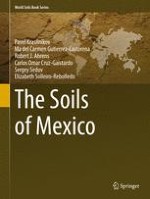Mexico is an extensive country with an extremely complex mosaic of landscapes. The soils of Mexico have still not been completely studied, and there are few publications available on this subject. This book provides a state-of-the-art view on Mexican soils, their geographical distribution, their use and degradation. This is a first attempt to give a systematized characteristic of the soil resources of Mexico. Land resources of the second-biggest economy in Latin America are critical for its sustainable development, and a demand for adequate soil information is high. The information contained within can be used for any soil-related research done in Mexico and in neighboring countries. The book includes detailed characteristics of soils of all the physiographic regions of Mexico with maps, photos and explanatory schemes. The book is based on the experiences of the authors in research and soil survey, as well as on the existent, mainly ‘grey’ literature on Mexican soils. The book is recommended for researchers and university readers, students of all levels and decision-makers, working in the area of soil science, environmental issues, Earth sciences, land management and nature conservation.
